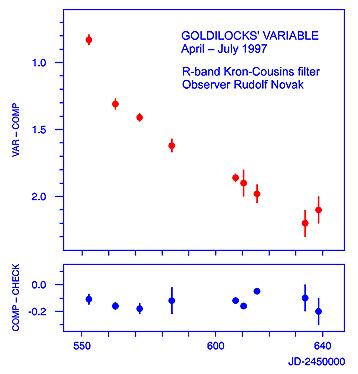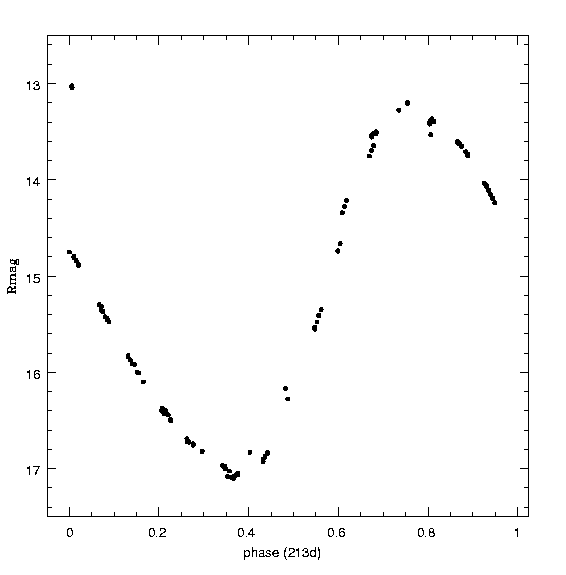-
Posts
726 -
Joined
-
Last visited
Content Type
Profiles
Forums
Gallery
Events
Blogs
Posts posted by fireballxl5
-
-
32 minutes ago, WanderingEye said:
The Stellarmate has been out for a few years, the Pro version is apparently going to be released first quarter this year....
I'm aware of the basic package, just wanted info on the "Pro" version 🙂
With the ASIair Pro I like the idea of the integrated power distribution for a compact system.
-
13 minutes ago, WanderingEye said:
Wait for the Stellarmate Pro
Do you have any links to details of this?
-
Regarding the Starlink satellites, it has been reported that they are working on fixes to reduce the visual impact for astronomers, see https://spacenews.com/spacex-working-on-fix-for-starlink-satellites-so-they-dont-disrupt-astronomy/
Also, they won't just be in LEO. Phases 1 and 2 will be located in 8 orbit shells ranging from 335.9km upto 1325km, see details here https://en.m.wikipedia.org/wiki/Starlink_(satellite_constellation)
CS, Andy
PS just noticed in the Wiki link that these latest 60 Starlink satellites launched in Nov are v1.0 and have "Albedo reduced", compared with v0.9 launched in May.
-
1 hour ago, Mr Spock said:
It would be interesting to produce a light curve for it. Do we know what its magnitude range is?
There is some old and limited data from 1997 in the linked article at http://www.messier.seds.org/xtra/leos/gl.html

and slightly more recent 1999 data here: http://tocobs.org/m27.htm

The AAVSO identify the star as V0571 Vul and have an entry here: https://www.aavso.org/vsx/index.php?view=detail.top&oid=63394, detailing a magnitude range of 14.4-17.5 (Rc band) with a period of 214 days.
HTH
CS, Andy
-
1 hour ago, wimvb said:
Cool! Always nice to see physics in action. Unfortunately that other variable is just outside your fov.
The second variable wasn't mentioned in the S&T article and as I'd already aligned & cropped the images to create the GIF and didn't have more time this morning I didn't go back to check this after reading the PDF😊...until now🙂
In fact, the second Mira variable is also in both shots and I've marked them up below.
Thanks for the feedback🙂
CS, Andy
-
 2
2
-
-
After reading a short article in June 2019's issue of S&T by Robert J. Vanderbei on the Goldilocks' Variable Star - see links below, I thought that I'd check my images of M27. Sure enough I had shots from Sept 2012 and Aug 2017 which showed this Mira-type star's variability🙂 Using these images I've created this animated GIF.
Note that the star was not visible in 2012 and visible in 2017 and although both are HaRGB images, they were captured using very different setups (12" MC and 6" refractor respectively)🙃
https://vanderbei.princeton.edu/tex/m27_variable_star/Goldilocks_FocalPoint.pdf
http://www.messier.seds.org/xtra/leos/gl.htmlPS, the blue cast on the 2012 (not visible) frame isn't so strong at all on the original GIF🤔
-
 17
17
-
-
Hi all,
we had a short clear spell on Friday evening and I managed to grab some luminance and RGB subs of the comet over a 34 minute period using my dual scope rig - lum @ 120s and RGB @ 60s subs.
As the comet's motion was fairly quick I used just one set of subs to create this LRGB image. Using the 17 lum subs I also created this animated GIF showing the comet's motion over this period.
All images at 1.7arc-sec/pixel.

CS, Andy
-
 7
7
-
-
-
for star size comparison here's my shot of the same target from back in 2008 using my 12" f9 MC (fl=2700mm), just 8x300s lum only. In not so great conditions🙃
This was at an image scale of 0.56arcsec/pix, long before I realised the importance (and inherent difficultly with my kit and sky conditions) of guide scale vs image scale lol. I've since backed-off to a more comfortable 1.7arcsec/pix😉
HTH, Andy

-
 2
2
-
-
40 minutes ago, Cornelius Varley said:
Not sure how relevant this is but if you have a laptop and Synscan handset this piece of software will track satellites Satellite Tracker
I used to use this software with my LX200 classic years ago and worked well. Has anyone tried this with the GTi?
-
3 minutes ago, Stub Mandrel said:
I use something very similar, if not identical.
I put a sheet of A4 paper over it which eliminates the 'grid', and I take 12 flats, rotating it about 30 degrees between each one. This gives me excellent results.
if that works for you then great, but I don't fancy rotating the panel between each flat exposure, especially when I like to automate the process across 7 filters (20x7 exposures🙃)
Maybe I've been spoilt by my 350x350mm EL panel (used with my 12" MC scope). I'm looking for something more convenient for use with my smaller refractors.
CS, Andy
-
My observatory is over 21 years old and still going strong😀
This summer though I upgraded the roofing with these corrugated bitumen sheets. Although they are heavier than regular felt I'm very pleased so far.
https://www.wickes.co.uk/Onduline-3mm-Green-Corrugated-Bitumen-Sheet-950-x-2000mm/p/240059
PS I'm based in rainy Lancashire🌧️
-
I purchased the OP's linked LED light panel and saw that the light intensity was heavily biased to one end. Together with the grid effect pattern I didn't like to look of it so returned it for a refund.
So I'm still on the lookout for an A4 sized LED panel that is evenly illuminated, ideally edge to edge😛
-
a more effective way is to
1. Invert the image; Image - Adjustments - Invert
2. Apply HLVG (download PS plug-in from http://www.deepskycolors.com/archivo/2010/04/26/hasta-La-Vista-Green.html)
3. Invert image again; Image - Adjustments - Invert
HTH,
Andy
PS, nice colours and detail in your Rosette🙂
-
-
I've just bought a 071 to use at 255mm and below (maybe with my 100mm camera lens). From experience using similar pixel scales with my DSLR I don't expect any issues 🙂
-
 1
1
-
-
I've had dead columns in both of my Kodak cameras. Calibration of light frames always corrected the defect. This was probably handled by the processing software, using interpolation from adjacent pixels to give the affected pixels a suitable value.
-
1 and 2 give the same signal level
3 and 4 give the same signal level
In each comparison there will be some spatial variation in signal intensity across the image plane, but peak signal levels should be roughly the same.
CS, Andy
-
My credit card is recovering on the bed after being used to purchase a ZWO ASI071MC Pro from 365 Astro 🙃 Planned upgrade from my 12-year old modded Canon 40D DSLR, used with my travel setup.
-
-
Lots of good info here, thanks for the contributions 🙂
I already have the AZ-GTi and Polemaster. I'm looking at options for a scope mounted controller such as RPi Stellarmate or equivalent. Can the RPi based solutions provide the same functionality as Polemaster, maybe using the Polemaster itself or even the guide camera?
-
-
I currently image with a Canon DSLR/60mm refractor combo on my AstroTrac and use a laptop with PHD2 for guiding in RA only. This seems to work very well but I would like to replace the laptop with something less power demanding when I'm traveling.
So, I'm looking at adding some Pi automation & control to my travel imaging rig and homing in on a Stellarmate setup. This is the shopping list I've put together for a nice Christmas present 😁
Any comments before committing to this? Anything that I've missed?
1. Pi4 model B, 4GB, https://thepihut.com/products/raspberry-pi-4-model-b?variant=20064052740158, £54
2. FLIRC metal case, https://thepihut.com/products/flirc-raspberry-pi-4-case, £16
3. HDMI cable, https://thepihut.com/products/micro-hdmi-to-standard-hdmi-a-cable, £5
4. 16GB+ Class 10 MicroSD card, SanDisk Ultra 16 GB microSDHC Memory Card + SD Adapter with A1 App Performance Up to 98 MB/s, Class 10, U1 https://smile.amazon.com/dp/B073K14CVB/ref=cm_sw_r_cp_apa_i_zKPYDbZ4FNN1P, £6
5. Stellamate O/S, https://www.stellarmate.com/products/stellarmate-os.html, $49
PS, further reading shows that I may need a RTC module, is this one compatible with Stellarmate?
CS, Andy
-
Has there been any further development here? If I wish to control my mount/camera using an Android tablet/phone then ASIAIR is the only option?





















Just ordered ASIair pro need tablet advice
in Getting Started Equipment Help and Advice
Posted
It's great to see this development work going on but owing to lack of time and knowing that COTS designs are imminent I'll wait for a consumer offering...